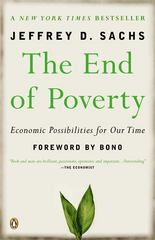Question
CASE PROBLEM Houston Disbursement Betsy Cotner went to work for a title com- pany after graduating from collegeThe department she worked in provided dis bursement
CASE PROBLEM
Houston Disbursement
Betsy Cotner went to work for a title com- pany after graduating from collegeThe department she worked in provided dis bursement advice to banks with regard to oil/gas-related loansWhen a bank granted a construction loan, the money was paid out according to progress madeSomeone had to monitor the project and authorize disbursement of cash under the loan agreement. While most banks moni- tor progress themselves, a few rely on out- side firms to do the monitoring, and this is what Cotner's department did.
Cotner spent nearly a decade learning the business and working her way up to as- sistant manager of the departmentThen a recession caused a decline in profits for the title company. The title company de- cided to get out of oil/gas disbursement, and the department manager decided to retire
Cotner thought that there was still enough business to make a decent living for herself if she did not have to bear the overhead cost of the title company. As she informed the lenders of the title com- pany's decision, she also informed them that she would be opening her own officeShe had developed an excellent personal reputation, and several major lenders indi- cated a willingness to continue doing busi- ness with her. Thus, Houston Disburse- ment was born.
As the recession ended, Cotner's busi- ness picked up substantially, but she began to worry about the vagaries of the oil business. She decided to diversify into general commercial construction in the Houston area. She hired Brent Ross, a young loan officer in the commercial con- struction field, with the understanding
that he could eventually buy an interest in Houston Disbursement
Cotner soon came to realize that she had gained little from diversificationA drop in oil prices caused the entire Hous ton economy to turn down, even when the national economy was strongBased on her experiences, Cotner prepared an esti mate of revenue and profits for Houston Disbursement for both a strong and a weak economyand for both high and low oil prices. Her estimates are summarized in Table 15-3While the analysis focuses on earnings before tax, this is approximately the same as cash flow because capital in- vestments were limited to office furniture, and net working capital was negligibleNet working capital was kept negligible by the practice of collecting retainer fees from banks at the start of a construction project Comer's salary, based on her estimate of what she could get if she were working for another company, is included in the cost figures. The business was organized as a Subchapter S corporation and Comer was in a 28 percent tax bracket.
To diversify, Cotner decided to open a second office. She would go to the new lo- cation and promote Ross to manager of the Houston office. Two possibilities that would take advantage of her current contacts were a commercial construction disbursement office in San Francisco and an oil business disbursement office in Alaska. Cotner was quite willing to move to either area.
Cotner considered high and low oil prices equally likely. However, she be- lieved the probability of a strong economy was twice that of a weak economy. She did not believe a weak economy was likely to last more than 2 years. Low oil prices, on the other hand, could continue for at least 5 years. Oil prices and the economy were both strong at the moment.
It would cost approximately $75,000 to open an office in either San Francisco or Alaska. The costs would be primarily de- velopment costs and would be expensed for tax purposes Fixed assets included in this cost would be under $10,000, and a provision of the tax law allowed expensing up to $10,000 of fixed asset acquisitions. Cotner had approximately $200,000 in- vested in U.S. government securities earn- ing 9 percent, so she would have no difficulty in getting the $75,000.
Case Questions
1. Compute expected return and standard deviation of annual return for each alternative separately.
2. Compute covariance of annual re- turns between the Alaska and Hous ton offices, and between the Califor nia and Houston offices.
3. Compute the expected return and standard deviation for each of the two combinations.
4. Prepare pro forma statements for each new office combined with the Houston office, using each of the four possible conditions.
5. What would you recommend to Cotner? Why?

Step by Step Solution
There are 3 Steps involved in it
Step: 1

Get Instant Access to Expert-Tailored Solutions
See step-by-step solutions with expert insights and AI powered tools for academic success
Step: 2

Step: 3

Ace Your Homework with AI
Get the answers you need in no time with our AI-driven, step-by-step assistance
Get Started


